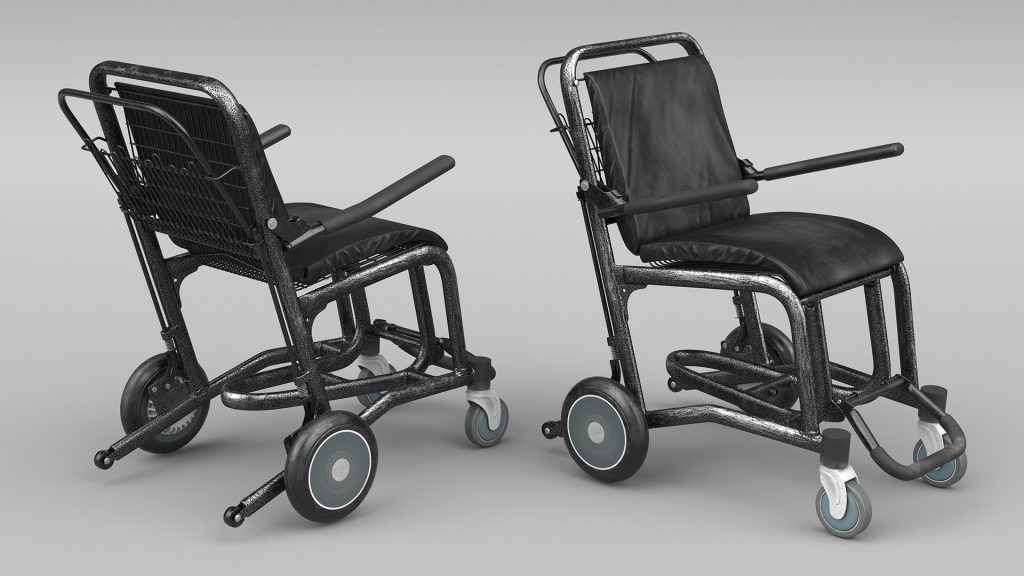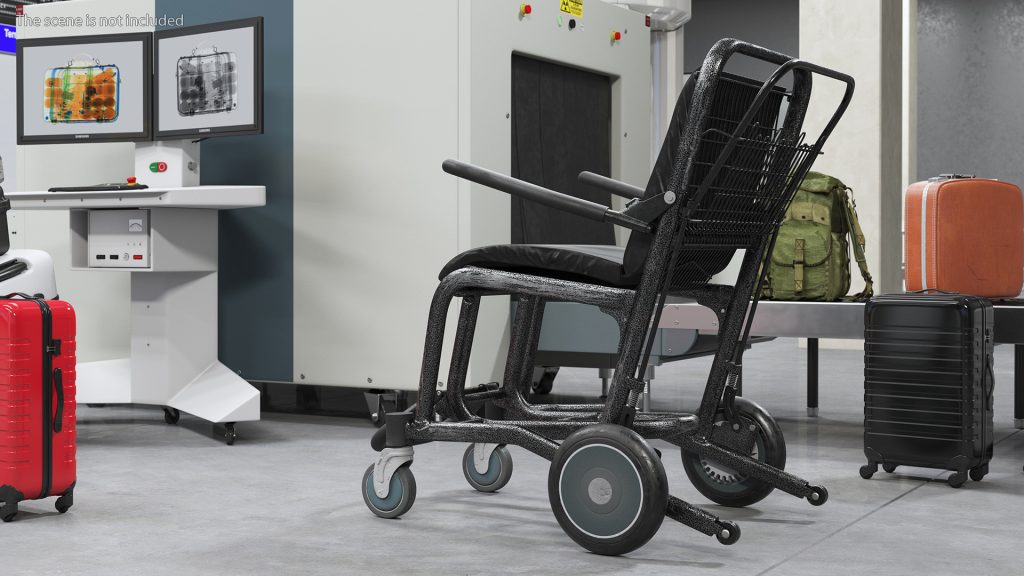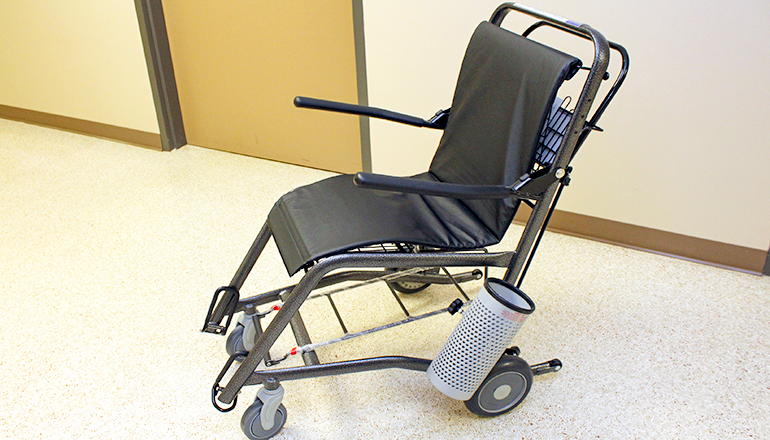A gleaming, sprawling airport terminal represents the pinnacle of modern transit, a nexus of global connection and technological prowess. Yet, for millions of passengers with reduced mobility, this journey begins not with excitement, but with apprehension. The experience is often defined by an antiquated apparatus—the standard airport wheelchair. Frequently described as little more than “glorified luggage carts,” these one-size-fits-none contraptions turn what should be a seamless passage into a gauntlet of discomfort, indignity, and palpable risk. The transfer from a personal, highly customized mobility aid to a rudimentary transport chair is often a perilous, undignified shuffle.
This systemic oversight isn’t just a matter of poor customer service; it’s a fundamental failure in delivering the promise of inclusive travel. It’s a failure that exposes passengers to potential injury and airlines to significant liability. But what if there was a solution that not only restored passenger dignity and safety to the passenger but also delivered profound operational benefits and financial benefits to the airport itself? The answer exists, and it is found in the professional transport wheelchair.
The Unspoken Struggle: What It’s Really Like Flying with Reduced Mobility Today

For many travelers, the thought of flying evokes images of adventure and new horizons. But for a significant and growing portion of the population—including disabled travelers, the elderly, and those with temporary injuries—the reality of navigating an airport is far less romantic. The journey is often fraught with anxiety, discomfort, and a profound loss of independence. The root cause? The very equipment meant to provide support: the standard airport wheelchair.
“Glorified Luggage Carts”: The Harsh Reality of Standard Airport Wheelchairs
Let’s be honest. The typical wheelchair you find at an airport often feels like an afterthought. They are frequently in a state of disrepair, with wobbly wheels, torn upholstery, and a design that prioritizes basic function over user well-being. These are not medical-grade wheelchairs; they are rudimentary transport devices that fail to meet the diverse needs of passengers with reduced mobility (PRM). For someone who relies on a custom-fitted personal mobility aid, being transferred to one of these chairs can be a jarring and demeaning experience.
One-Size-Fits-None: Why Basic Chairs Fail on Safety and Comfort
The “one-size-fits-all” approach simply doesn’t work for mobility. A passenger with a spinal cord injury has vastly different seating and support needs than an elderly individual with arthritis. Standard chairs lack crucial features like pressure relief cushions, adequate back support, or secure adjustable footrests. This lack of ergonomic design isn’t just uncomfortable; it’s dangerous. Poor support can lead to pain, pressure sores, and an increased risk of falls or injury during transfers, turning a simple airport transit into a significant medical risk.
A Recipe for Disaster: The Alarming Risk of Damaging Personal Wheelchairs
One of the biggest airport pain points for wheelchair users is the requirement to check their personal mobility aids as luggage. These devices are often complex, custom-built extensions of their bodies, costing tens of thousands of dollars. Entrusting them to baggage handlers is a roll of the dice. Wheelchair mishandling is rampant, with reports of damage and loss being disturbingly common. A damaged personal wheelchair can mean a complete loss of independence for weeks or even months, not to mention the costly and stressful process of filing compensation claims. This widespread problem highlights a critical need for reliable airport mobility solutions.
The Human Cost: When a Trip Through the Airport Means Stress, Indignity, and Lost Independence
Imagine being pushed through a bustling terminal by a stranger, unable to control your own pace or direction. Imagine the anxiety of being left in a corridor while waiting for PRM assistance, or the indignity of a difficult and awkward transfer in a cramped jet bridge. For many, this is the reality of airport accessibility today. It strips away personal autonomy and turns a public space into a source of stress and humiliation. True accessibility is about more than just providing a chair; it’s about preserving travel independence and dignity.
More Than Just a Chair: Introducing the Professional Transport Wheelchair Solution

The good news is that a far superior alternative exists. Professional transport wheelchairs are specifically engineered for the unique demands of the airport environment. These advanced mobility devices are not just an upgrade; they represent a fundamental shift in how we approach airport accessibility—a shift that benefits passengers, staff, and the bottom line.
Built for the Airport Grind: The Difference Durability and Ergonomic Design Make
Unlike their basic counterparts, professional transport chairs are built to last. Featuring robust materials like a lightweight aluminum frame wheelchair or advanced thermoplastic wheelchairs, they are designed for high-frequency use. A durable wheelchair means reduced maintenance costs and a longer service life. More importantly, their ergonomic design prioritizes the user. With features like comfortable seating, padded armrests, and proper support, they transform the passenger experience from an ordeal into a comfortable journey, ensuring a safe boarding process.
Safety Isn’t Optional: Intelligent Brakes, Stability, and Peace of Mind
Passenger safety is non-negotiable. Professional models come equipped with advanced safety features that are absent in standard chairs. An intelligent braking system prevents accidental rolling on ramps, while anti-tip features provide crucial stability during transfers and movement. These chairs often have a lower center of gravity and a wider wheelbase, making for a stable transport chair that gives both the passenger and the assisting ground staff peace of mind.
Designed for the Journey: Navigating Crowded Terminals with Unmatched Ease
Airports are complex environments. A lightweight transport chair with easy maneuverability is essential. Professional wheelchairs are designed with a tight turning radius and responsive handling, allowing ground staff to navigate crowded gates, narrow corridors, and bustling security lines with ease. Many models are also foldable wheelchairs, making them simple to store and deploy, which further enhances operational efficiency from curb-to-gate service.
From Pain Point to Positive Experience: How Better Wheelchairs Transform the Passenger Journey
Investing in a high-quality airport wheelchair fleet does more than just solve logistical problems; it fundamentally transforms the travel experience for passengers with reduced mobility. It’s about shifting the paradigm from providing the bare minimum to creating a genuinely welcoming and supportive environment. This commitment to an enhanced passenger experience has profound effects.
Empowering Independence: A Return to Dignity and Self-Reliance
The difference between being treated as human cargo and as a valued customer is immense. A comfortable, secure, and well-designed wheelchair restores a sense of dignity. When a passenger feels safe and supported, the anxiety of travel melts away. They are no longer just a passive recipient of a service but an empowered individual on a journey. This focus on passenger dignity is a cornerstone of modern customer service and a key driver of customer satisfaction and loyalty, especially for the growing markets of senior travel and travel for people with disabilities.
The Smart Investment: Why Upgrading Your Wheelchair Fleet is a Win-Win for Airports and Airlines

Some may view upgrading an entire wheelchair fleet as a significant expense. However, when you look at the complete picture, it becomes clear that it’s one of the smartest investments an airport or airline can make. The financial benefits, operational benefits, and reputational benefits create a powerful business case for moving beyond the status quo. This is an investment in improved PRM services that pays for itself many times over.
The Bottom Line: Slashing Maintenance Costs and Costly Compensation Claims
Cheap, flimsy wheelchairs are a false economy. They break down frequently, leading to constant repair and replacement cycles. In contrast, a durable wheelchair designed for heavy use significantly lowers long-term maintenance costs. Even more impactful is the reduction in liability. By providing a safe, reliable transport option, airports and airlines drastically reduce the instances of personal mobility aid damage. Fewer damaged personal chairs mean fewer expensive compensation claims and a lower litigation risk, directly protecting the bottom line. This is a clear path to airline cost reduction.
A Well-Oiled Machine: Boosting Operational Efficiency and On-Time Performance
Efficiency is the lifeblood of any airport. Slow boarding processes and delays in PRM assistance can have a ripple effect, impacting on-time performance. Professional transport wheelchairs, designed for easy maneuverability and safe, quick transfers, streamline the entire enplaning and deplaning process. Ground staff safety is also improved, as ergonomic designs reduce the physical strain of pushing and assisting passengers. When the special assistance services run smoothly, the entire airport operation becomes more efficient.
Building a Sterling Reputation: The Untapped Marketing Power of True Accessibility
In today’s socially-conscious world, brand reputation is invaluable. An airport known for its exceptional commitment to accessibility becomes a preferred choice for millions of travelers. Positive word-of-mouth from the community of disabled travelers and the aging population is powerful marketing. Demonstrating genuine social responsibility and a commitment to inclusive travel builds immense customer loyalty and sets a new standard for airport customer service.
Staying Ahead of the Curve: Meeting (and Exceeding) Global Accessibility Laws
Providing excellent accessibility isn’t just good business; it’s a legal requirement. Around the world, governments have enacted powerful legislation to protect the rights of travelers with disabilities. Proactively investing in a superior airport wheelchair fleet is the best way to ensure compliance and avoid costly penalties.
A Quick Look at Your Legal Duty: The Air Carrier Access Act (ACAA) and Beyond
In the United States, the Air Carrier Access Act (ACAA) mandates that airlines provide comprehensive assistance to passengers with disabilities. This includes everything from connecting flight assistance to a safe boarding process. The Department of Transportation (DOT) actively enforces these rules, and failures in compliance can lead to heavy fines. Similarly, EC Regulation 1107/2006 in Europe and IATA guidelines internationally set clear expectations for PRM assistance. Adhering to these regulations, as well as ADA standards, isn’t about ticking a box; it’s about guaranteeing a barrier-free journey for every passenger. Airlines must have a Complaints Resolution Official (CRO) available to handle any issues, but the goal should be to prevent complaints in the first place.
The Future Is Now: A Glimpse into Self-Driving Airport Mobility
The evolution of airport mobility is not stopping with better manual wheelchairs. The next frontier is already here: autonomous wheelchairs. These self-driving mobility solutions are poised to revolutionize the airport experience. Imagine a passenger arriving and summoning an electric airport wheelchair that safely guides them through terminal navigation, security, and directly to their gate. This technology promises to restore an unprecedented level of travel independence, further boost operational efficiency, and solidify an airport’s reputation as a leader in innovation and accessibility.
Ready for an Upgrade? Key Considerations for Choosing Your New Fleet
Making the switch to a professional wheelchair fleet is a strategic decision. When selecting new advanced mobility devices, airports and airlines should consider several factors: durability of materials (like aluminum frame vs. thermoplastic), safety certifications, maneuverability in tight spaces like aircraft aisles (requiring a specialized aisle chair or onboard wheelchair), ease of maintenance, and, of course, passenger comfort. Partnering with a supplier who understands the unique demands of the aviation environment is key to a successful investment in accessibility.
Conclusion: Elevating the Travel Experience for Everyone Isn’t Just Good—It’s Great for Business
The age of the “glorified luggage cart” is over. For any modern airport or airline, investing in professional transport wheelchairs is no longer a choice, but a necessity. It is a decisive step towards creating a truly seamless passenger journey, one that is safe, dignified, and inclusive for all. This commitment doesn’t just fulfill a legal and moral obligation; it delivers tangible returns through enhanced operational efficiency, reduced costs, and a sterling brand reputation. By elevating the experience for passengers with reduced mobility, we elevate the standard for the entire travel industry.

